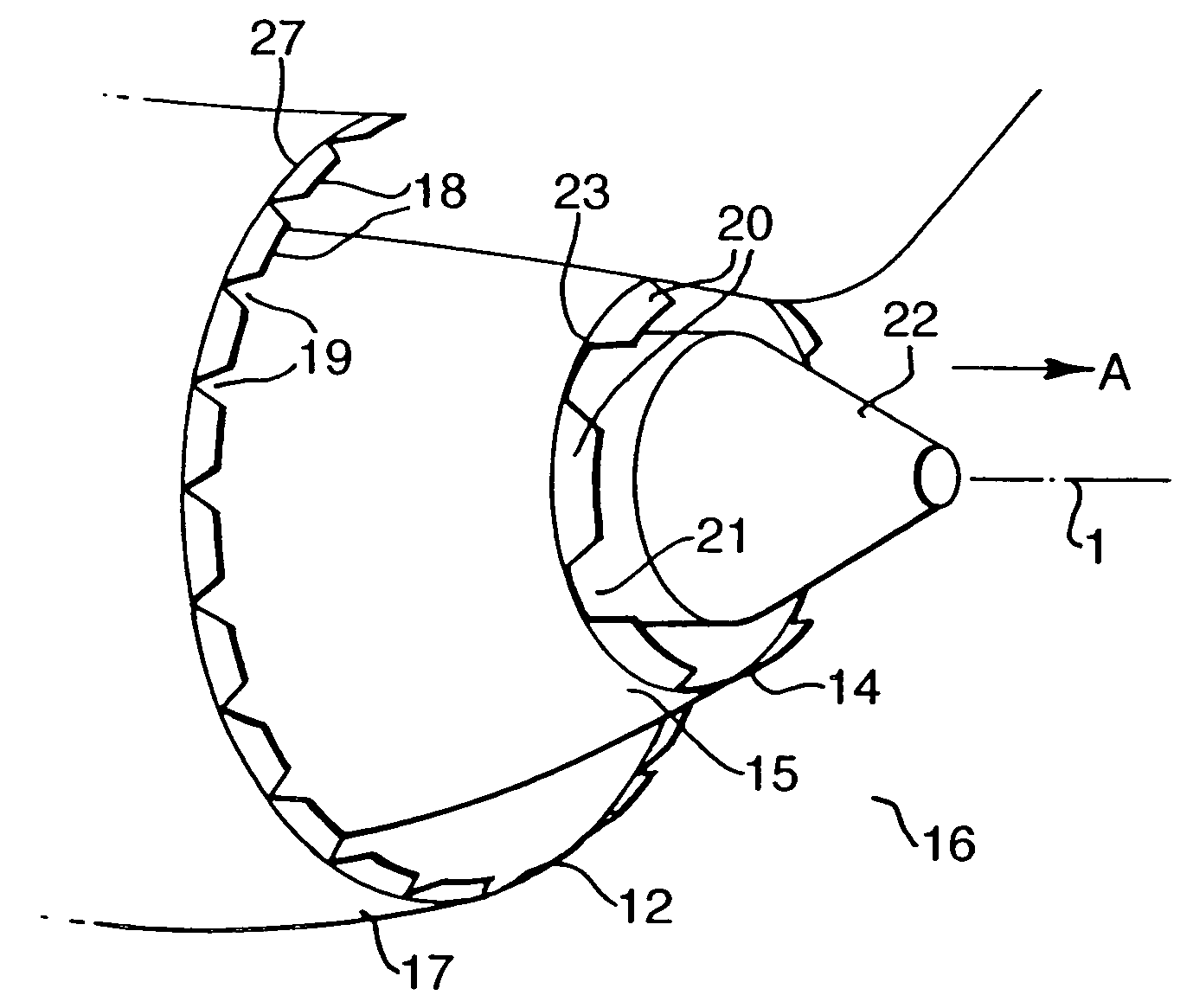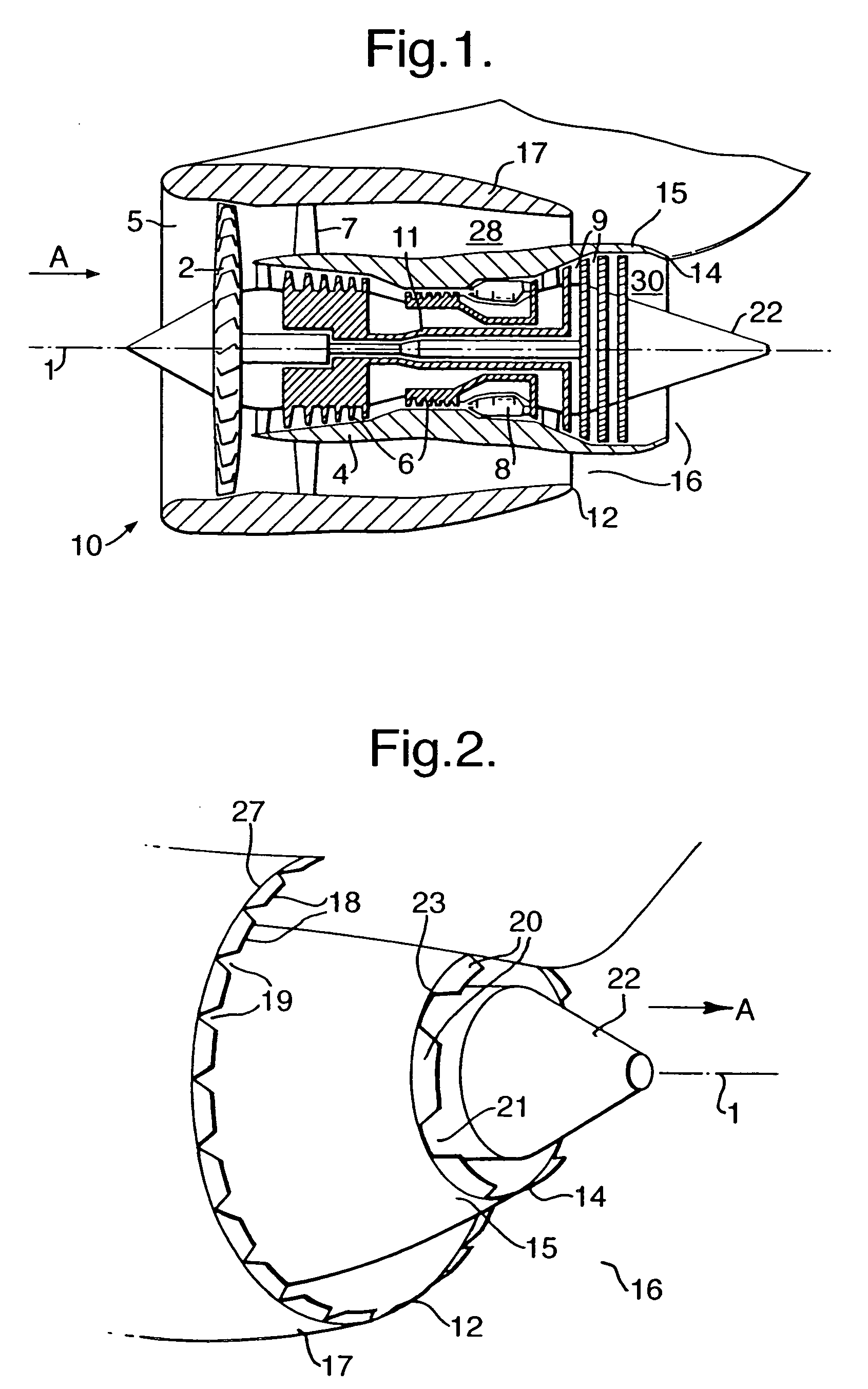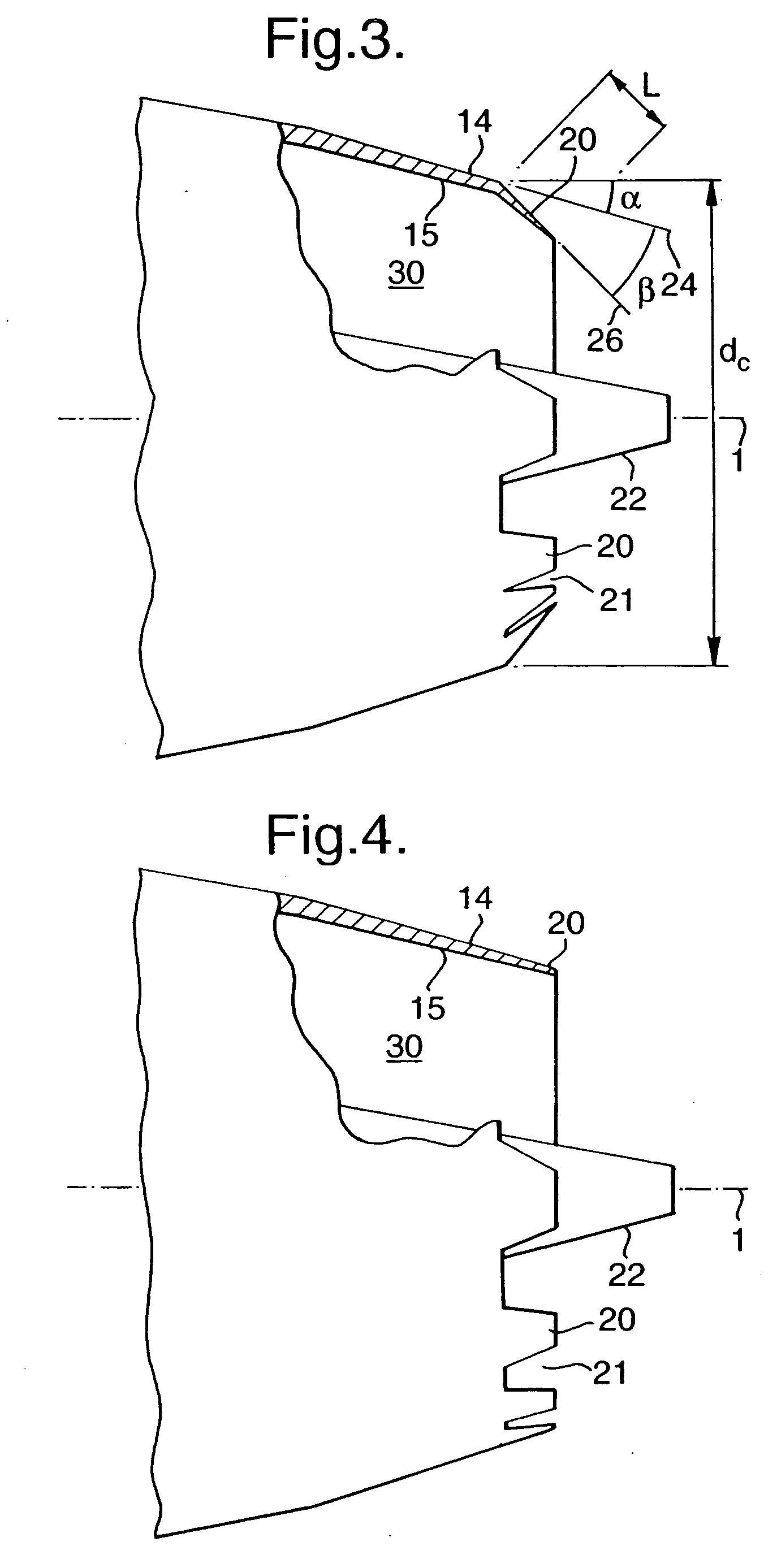Gas turbine engine exhaust nozzle
a gas turbine engine and exhaust nozzle technology, applied in the direction of machines/engines, climate sustainability, sustainable transportation, etc., can solve the problems of noise generation, noise generation, and noise generation in the core exhaust stream of the gas turbine engine, and achieve the effect of reducing the noise of the exhaust stream
- Summary
- Abstract
- Description
- Claims
- Application Information
AI Technical Summary
Benefits of technology
Problems solved by technology
Method used
Image
Examples
first embodiment
[0099]FIG. 5 shows the present invention, the nozzle comprising a suitable mechanism for deploying the tabs 20. The deployable tabs 20 are shown in the second non-deployed position by the solid lines, where they are generally aligned with the nozzle wall 15 and therefore aligned generally with the exhausted gas stream, and in the first deployed position by the dashed tabs 20′. In the first deployed position the tabs 20′ interact with the gas stream creating and shedding noise reducing vortices. The first mechanism 32 suitable for activating the tabs 20, 20′ comprises a shape memory material (SMM) element 34, as known in the art, which is switchable from a first shape indicated as reference numeral 34 to a second shape indicated as reference numeral 34′. The SMA element 34 is disposed within or partly within a pocket 36 situated in the aft end of the nozzle wall 15 and a recess 38 in the tab 20. The SMM element 34 is secured by rotatable means 40, 42 to both the nozzle wall 15 and th...
second embodiment
[0104]FIG. 6 is a section through part of the core nozzle 14 and shows the present invention, the nozzle 14 comprising a second actuation mechanism 50 for deploying the tabs 20. The second actuation mechanism 50 is disposed within or partly within a pocket 36 situated in the aft end of the nozzle wall 15 and a recess 38 in the tab 20 and comprises a SMM spring element 52, in the general form of a helical spring, and a further, coaxial spring 54. The coaxial spring 54 comprises a conventional resilient material and which operates in a conventional manner. The SMM spring 52 may be secured by rotatable means 56, 58 to both the nozzle wall 15 and the tab 20 respectively. The second mechanism 50 also comprises the tab 20 being rotatably mounted to the nozzle wall 15 by further rotatable means 60.
[0105] The second embodiment of the present invention operates in a similar manner to the first embodiment in that the length of the SMM spring element 52 changes when its temperature is above or...
third embodiment
[0108]FIG. 7 is a section through the part of the core nozzle 14 and shows the present invention, the nozzle comprising a third actuation mechanism for deploying the tabs 20. The deployable tabs 20 are shown in the second non-deployed position by the solid lines, where they are generally aligned with the nozzle wall 15 and therefore aligned generally with the exhausted gas stream, and in the first deployed position by the dashed tabs 20′. In the first deployed position the tabs 20′ interact with the gas stream generating and shedding noise-reducing vortices.
[0109] In this third embodiment of the present invention the tabs 20 themselves are manufactured from SMM thus the tabs themselves are the actuation mechanism. The tab 20 is disposed to the periphery of the nozzle 14 and generally extends in the rearward direction therefrom. Again above the switch temperature the SMM tab 20′ will be in the first deployed position and below the switch temperature the SMM tab 20 will be in the seco...
PUM
 Login to View More
Login to View More Abstract
Description
Claims
Application Information
 Login to View More
Login to View More - R&D
- Intellectual Property
- Life Sciences
- Materials
- Tech Scout
- Unparalleled Data Quality
- Higher Quality Content
- 60% Fewer Hallucinations
Browse by: Latest US Patents, China's latest patents, Technical Efficacy Thesaurus, Application Domain, Technology Topic, Popular Technical Reports.
© 2025 PatSnap. All rights reserved.Legal|Privacy policy|Modern Slavery Act Transparency Statement|Sitemap|About US| Contact US: help@patsnap.com



